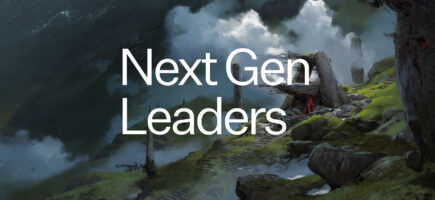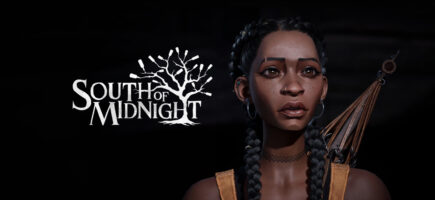The Art of Crafting Gripping Horror Trailers: Insights from Our Pros

The most popular articles
Horror trailers are a special storytelling genre that fuses suspense, psychology, and technology. Their purpose? To frighten the audience and promise them a thrilling experience when they get their hands on the game or watch the movie. Immersing the viewers or players in a world of dread without revealing too much, but rather just teasing their senses, is no small feat. The seasoned trailer pros at Heroic by Room 8 Group —Sandy Heslop (Head of CG) and Sergey Egorov (Trailer Production Team Lead)—shared some secrets with us this Halloween. Things are about to get spooky. 🎃
Movie Trailers vs. Game Trailers
Movies and games are two distinct genres, and despite some similarities—like game trailers mimicking cinematic techniques—they are quite different in their purpose and approaches. Both genres immerse the audience in the main characters’ experience, sure. But while movie trailers focus primarily on the story, game trailers include gameplay and mechanics, pulling back the curtain and preparing the players for what’s to come. A great example is a game like Dead Space, where suspense is created through dismemberment gameplay. The players are intrigued and scared by the monsters shown (and, more importantly, the ones not shown), but receive some clues about how they can handle these encounters.
While numerous horrors feature third-person perspective gameplay and are still considered terrifying—looking at you, Alan Wake, Dead by Daylight, and Resident Evil—there is another common differentiator. You are right, it’s the prevalence of games and game trailers featuring first-person perspective experiences. This technique means that the players, unlike moviegoers, are not the observers of the unfolding terrifying events. They have these events happen to them, in short. Outlast, Amnesia, Phasmophobia, Five Nights at Freddy’s, Layers of Fears, Slenderman, Dying Light, The Forest, SOMA… We can go on, but you get the point.
The Essence of Horror
When it comes to crafting horrifying trailers, there are some fundamental principles that need to be adhered to. Horror relies on an emotional rollercoaster that takes you through a few phases: building tension, toying with expectations, and, finally, delivering a shocking twist. Finding the right pacing is key here. By alternating between moments of “Something seems wrong”, “Something is definitely not right”, “Something is wrong!” and “Whew, everything is right” before delivering a suspenseful climax is quite tricky. The magic formula to getting it right? Finding the equilibrium between intriguing the viewers enough to evoke curiosity for the game and leaving the “meatiest”, scariest parts unrevealed. After all, an effective horror trailer is rarely about just “showing”. It’s about using visuals and sounds to engage the audience, and pull them into a psychological mind game of storytelling.
Monster Reveal: Pros and Cons
There’s a golden rule in horror: “Don’t show the monster.” Letting the audience’s imagination run wild is a crucial ingredient of making an effective horror movie or game. It might sound odd, but people are scared of the thought of the monster, not the actual monster. The minute you see it, you are not really afraid anymore. As soon as the source of the anxiety and terror is out in the open, it’s over.
This is the reason most horror movies can be budget-friendly—the terror is achieved by leveraging the fear of the unknown. Typically, it’s all about the psychological aspect, not the visual one.
Still, there are no rules without exceptions. Some games, like the aforementioned Dead by Daylight, make it their point to introduce a plethora of monsters players can face, creating exclusive trailers to introduce each of their new Killers. This approach—while a tad unconventional—plays into the game’s philosophy, where one of the players gets to be the Killer, and the rest are trying to survive. Add the numerous playable monsters to the mix, and showing their variety becomes the title’s strength, its ace in the hole.
Trailer Creating Strategies
There are a few key aspects of crafting horror trailers that the artists need to keep in mind when starting work on one. The first fundamental issue is the fact that they need to reach a broad audience. This is especially applicable to movies, but has some effect on game trailers, too. Excessive gore, violence, and shock content can deter viewers, not to mention the age ratings that need to be adhered to. Still, you need to maintain the level of tension that will send shivers down the viewer’s spine. The answer to this riddle? Subtlety, gradual tension-building, and occasional shocking moments in just the right proportions. This means that, at times, more is required while working on horror trailers, due to their sheer length. After all, an effective buildup for a terrifying moment needs some time to “bake” before the viewers are ready to witness the horror elements.
Conclusion
Horror trailers definitely stand out among other genres, holding their unique niche of being longer, more nuanced, and featuring a healthy (or unhealthy) portion of psychology, alongside storytelling and tech elements. This means that horror trailers—be it for movies or games—are, in a way, a pinnacle of immersion among their “peers”. When done right, a horror trailer can be a work of art and a mini-story in and of itself. What can be a better example of storytelling than leaving viewers trembling after just a few minutes?
With all these tricks in mind, take a look at some more terrifying trailers our pros adore. We believe that these are the prime examples of effective horror usage we discussed above:
The cover: Oleksii Fedorov, 3D Stylized Characters Artist, Room 8 Studio




